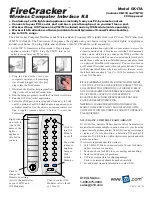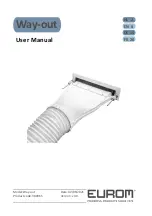
Preparing for use
R&S
®
NRPxxTWG
12
User Manual 1178.8371.02 ─ 08
3.3
Considerations for test setup
Give particular attention to the following aspects when handling power sensors.
EMI impact on measurement results
Electromagnetic interference (EMI) can affect the measurement results.
To suppress electromagnetic radiation during operation:
●
Use high-quality shielded cables, for example, double-shielded RF and interface
cables.
●
Always terminate open cable ends.
●
Ensure that connected external devices comply with EMC regulations.
Signal input and output levels
Information on signal levels is provided in the data sheet. Keep the signal levels within
the specified ranges to avoid damage to the product and connected devices.
Preventing electrostatic discharge (ESD)
Electrostatic discharge is most likely to occur when you connect or disconnect a DUT.
►
NOTICE!
Electrostatic discharge can damage the electronic components of the
product and the device under test (DUT).
Ground yourself to prevent electrostatic discharge damage:
a) Use a wrist strap and cord to connect yourself to ground.
b) Use a conductive floor mat and heel strap combination.
3.4
Connecting to a DUT
For connecting the power sensor to a DUT, use the RF connector. See
To connect to the DUT
1. Ensure that the RF connector of your DUT is compatible with the RF connector of
the power sensor.
See
.
2. Inspect both RF connectors carefully. Look for metal particles, contaminants and
defects.
If either RF connector is damaged, do not proceed, because the risk of damaging
the mating connector is too high.
See also
Chapter 12.1, "Regular checks"
3. Insert the RF connector straight into the RF output of your DUT. Take care not to tilt
it.
Connecting to a DUT













































